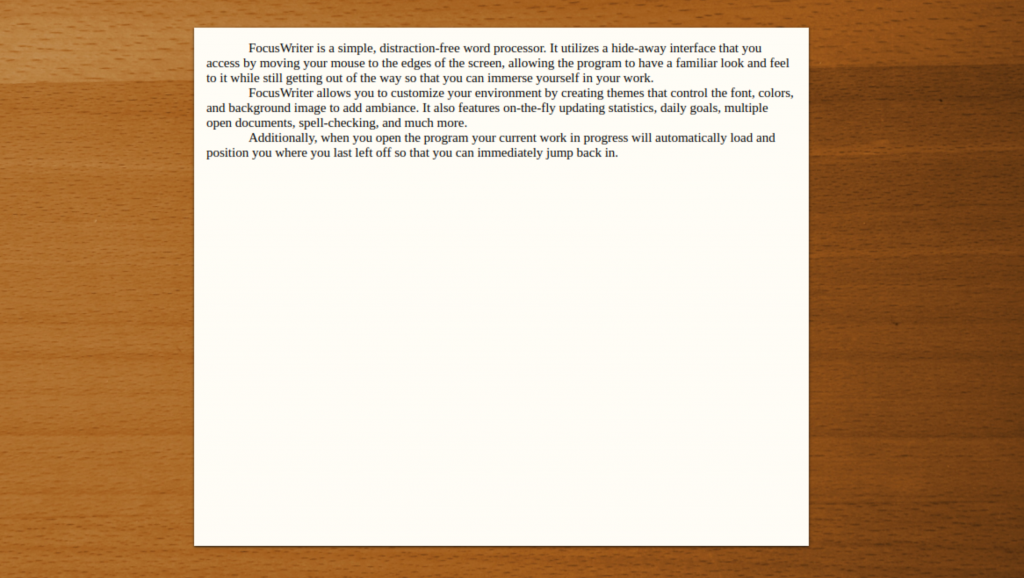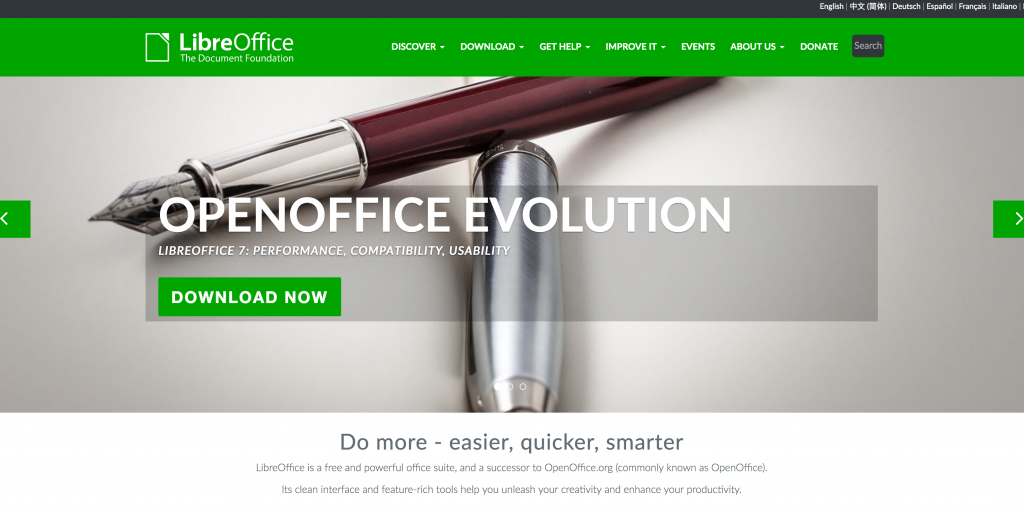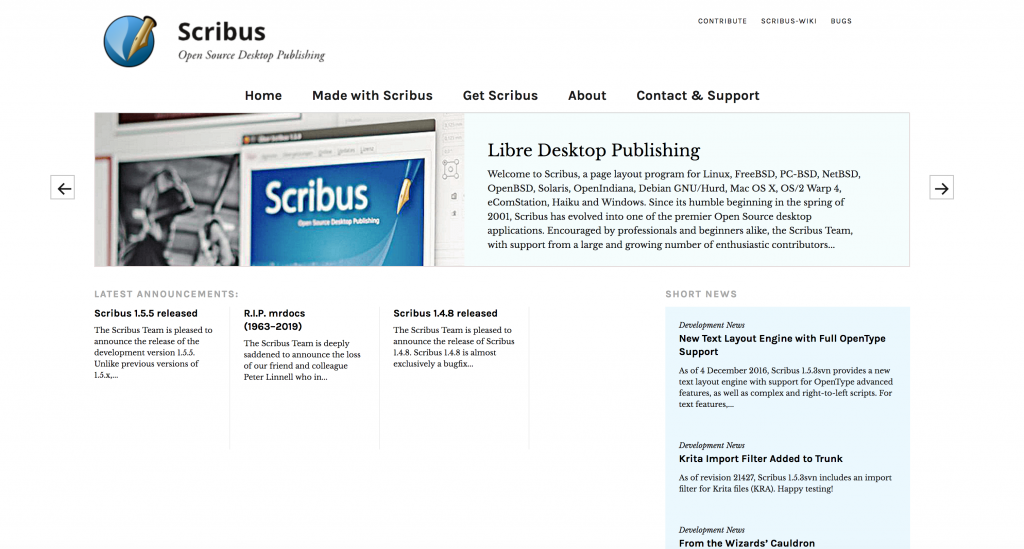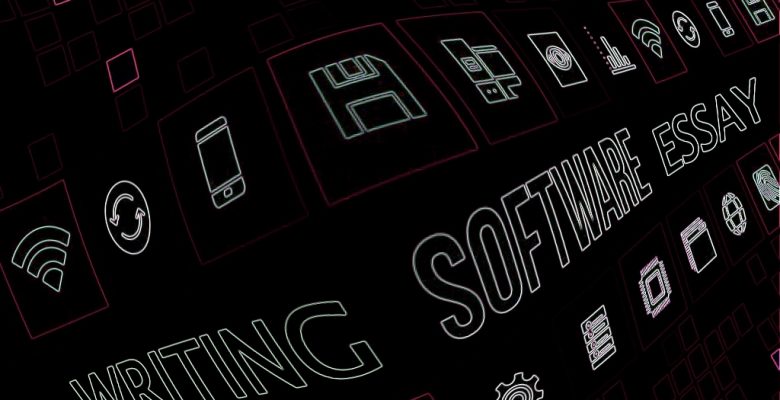TOP 5 Free essay writer software and programs
One of the benefits that professional writers derive from technology advancement is writing software. It makes the whole writing process easy, especially with the different tools and features available on this software. Some of this software is not only built to fast track writing process but also to ensure that you do not get distracted while you write.
Thereby making you write with the best of your writing ability. And that is why we have carefully selected some free writing software that will make it easier for you to plan, write with zero distractions, and prepare your writings for publication.
Top 5 free essay writer software for your writing needs
1.FocusWriter
FocusWriter is a word processor free from distraction specifically designed to assist creative writers reproduced the ideas on their mind on the screen. The second and third draft, where it is necessary to move or cut sections, are not intended to refine paragraphs and chapters with cross-references, which explains the absence of some features that are expected from word processing software.
The options for formatting are very limited, and the interface takes over the entire desktop, so there is no risk of distraction by email, social media, or viewing ads. It’s just you and your keyboard.
User experience
The interface for FocusWriter is very clean, with just a blank central page waiting for your words. You can adjust the theme (including the colors of the text and wallpaper) to something more interesting than the standard theme, but ensure you are changing to the theme you like a lot – there’s no way to adjust the paper size in the middle or make it occupy the screen completely; therefore you will look at that background very well.
You can access Menus and Setting in FocusWriter by moving the cursor to the sides of the screen. The upper menu features include a reversal of common text editing options; alignment, special characters, bold / italics/line, search and replace and some special tools to help you keep your words on the line.

You can set alarms to go off after a certain period of time or at a certain time, which is very useful since one of the main things that FocusWriter prevents is a distraction.
You can also set goals in FocusWriter – depending on the time or word count. Once you’ve reached your goals, you can begin a “sequence” – a simple yet effective way to ensure that you make every effort to complete the writing process.
FocusWriter is the Text Oriented killer tool, contradicting everything except what you’re typing at the moment – an entire paragraph, some lines, or just the current line. As already mentioned, this is not useful for publishers, but simply to put ideas on paper, and it’s great than essay writing bot.
2.BlindWrite
The best writing you can ever have comes when there is zero distraction, and the mind is undisturbed. In this spirit, BlindWrite makes you write blind and edit but not really blind. The interface of the app is a simple black and white text editor that asks you what you want to write and the writing duration. Afterward, you can type, but BlindWrite shortens your text until the timer reaches zero.
User experience
What this method does is simply encourages you to start writing. When you can’t even see what you’re writing, you can take all your thoughts off before you think about things like word choice and sentence structure, and preventing the trends of perfection that lead to the writer’s barrier.
Note: After opening BlindWrite, you will notice a chat balloon in the corner saying that BlindWrite is now Blurt. We talked to the manufacturer Blurt, and he assured us that he has no intention of closing BlindWrite. However, if you have used BlindWrite and you like it and are willing to pay the subscription ($ 4.99 / month for anyone who adopts early) to get more resources, it’s definitely worth checking out.
3.LibreOffice
Everyone needs a writing software package for daily tasks. Microsoft Office may be the best-known option; however, there are also many free alternatives that are the same as almost every aspect of Word, Excel, PowerPoint, and company. LibreOffice is good writing and has earned a reputation as one of the best free office packages available.
LibreOffice is a branch of the OpenOffice project and is developed by a large team of enthusiastic programmers who offer regular updates and new features to ensure it keeps up with premium office software.

LibreOffice has six component programs that offer everything you need in an office package:
- Calc (spreadsheets)
- Writer (word processing)
- Impress (presentations)
- Math (mathematical formulae)
- Draw (vector graphics)
- Base (databases)
You can save and open a lot of formats, including Microsoft file types such as DOC, DOCX, PPT, PPTX, and many more, which is ideal if you are working with Microsoft Office users, or if you have previously used Microsoft’s suite but wants to try LibreOffice.
User experience
LibreOffice offers a range of styles for the interface: a traditional system of icons and toolbars and an optional Notebook, the same as the ribbon used in Microsoft Office since 2007. They both have their different advantages; NotebookBar will make the transition from Microsoft Office more natural, and the old-school look means everything can be seen at a glance, and you can easily navigate using a keyboard instead of a mouse if you like.
Other than that, there are few differences between the productivity toolkit of Microsoft and LibreOffice. The Office cloud storage option is not integrated into the open-source suite, but this is easily fixed by installing Dropbox desktop software, which offers you immediate access to your account as if it were a folder on your computer.
The selection of LibreOffice templates may seem limited when compared to Microsoft; however, this can be easily fixed by the large collection of downloadable options that can be found in the online repository of the project. There are also plug-ins for features such as advanced grammatical tools, additional language packs, improved accessibility options (like export to braille embossers), and plug-ins for other programs like the mind mapping tool (Freemind).
LibreOffice is absolutely incredible. Try it, and you will not want to pay for office software again.
4.Scribus
Are doing beyond writing and want to create an awesome layout for your words. Then Scribus is for you, the platform is free, open-source, and it enables you to create beautiful and professional layouts for anything from a page to magazines. Although it takes a while to learn how to get started, Scribus is easier to use and cheaper (because it’s free!) than tools like Adobe InDesign.
There are many open-source programs for writing words and other office tasks, let alone computer publishing. Fortunately, Scribus is enough for you. It comes with all the features you need to create your magazines, newsletters, posters, and many other types of documents.
In reality, Scribus is so full of professional-quality tools that it can even be used in place of Adobe InDesign in a toolbox of independent designers and editors.
Scribus has been in continuous development for 13 years, and its features include professional typesetting and color management; however, not Pantone colors because of the license, although you can add Pantone also online publications like interactive forms and PDFs.

It is an extremely powerful software with an interface that looks like a program with an extremely high price.
The only real problem is that Scribus cannot open or save files from other self-publishing applications, therefore if you have a large library of InDesign or Quark designs, it may take some time to update.
User experience
Scribus will need a lot of mastery if you never use a program like it before; however, if you’re familiar with InDesign’s frame and layer system, it’s not much of a learning curve.
The program starts with an empty list of workspaces, called a document, and with it, you can place objects, most of which are frames. The content is written in the text frames, there are image frames for pictures, and there are other shapes/line frames for making fancy graphics (for example, graphics and diagrams can be inserted).
Once you have defined all of this, you can change or alter things so that everything looks fine. You can add more complexity in the form of layers, with frames stacked on top of each other, and Scribus also has professional publishing elements such as color partitioning, CMYK, and special colors.
You can quickly and easily add your own fonts and work with scripts using predefined scripts to do things like automatically increase the total page size.
Scribus is incredibly impressive – its only disadvantage is the limited support for proprietary file types, which results from using technology licensed from Adobe. A unique free publishing tool.
5.WriteMonkey
While writing, it is very easy to give in to distractions and operate well below your best performance. WriteMonkey aims to solve this, giving you a focused work environment that allows you to completely focus on what you are doing.
If you are familiar with full word processors like Microsoft Word, WriteMonkey will look very strange at first; the interface is thin and empty, and you can feel lost. In fact, this is very different- it has all the tools you need, just well hidden. This is a rare but powerful word processor that doesn’t attract attention and also eliminates distractions.
There is a whole lot of things to cherish about WriteMonkey, and it’s the simplicity at its core that makes it so good. The stripped-back restraint is the real thing, and for anyone who primarily loves to write or whose job is writing, it is a real blessing.
As an added advantage, WriteMonkey is a portable application, so you can put it on a USB drive and use it on any computer you have. You will likely continue to discover many things to enhance WriteMonkey’s appeal as you work with it – such as Markdown and CSS support.
WriteMonkey is an almost perfect tool for writers. Every feature on it was brilliantly designed with writing in mind. This may seem obvious to a word processor; however, few developers are right that WriteMonkey stands out.
User experience
Initially, it might look a little weird, to say the least, and anyone that is used to the myriad of menus and toolbars that go into WriteMonkey will be surprised. However, the idea is to motivate yourself and allow yourself to focus on the words and forget other things. The lack of screen designs means you will not be distracted when considering whether you should use the different formatting options offered by the word processor; all you have to do is move on and write. Of course, these options are available when you need them, but you need to search for them in the context menu.
The program is described – pleasantly – as “zenware,” and this is a suitable label for it. It’s a really great experience when you decide on a different approach to WriteMonkey. The interface is not completely empty. At the bottom of the screen are the very important current word count (essential for an expert writer), a small, subtle clock, and Scratchpad access that can be used to switch between files, bookmarks, and headings. You can change this information field to show other details, but it’s up to you to decide.
Conclusion
The software listed below is the best that you can use for your writing task. You might be familiar with some of them, and you might not be. However, all of them hold promising features that make them outperform the traditional writing tools and the best essay writing services that you might know. The best thing about them is that they are all free. Therefore, you can go through their user experience, examine their individual features to know the one you can work best with.
